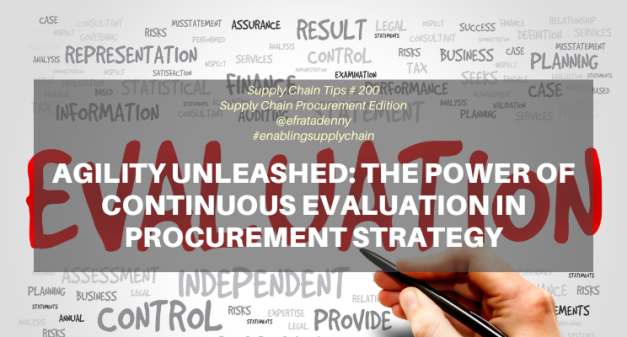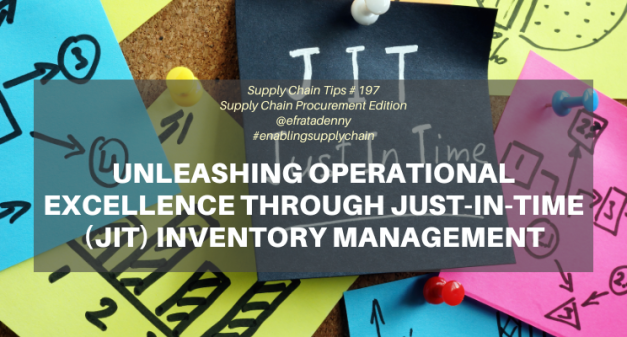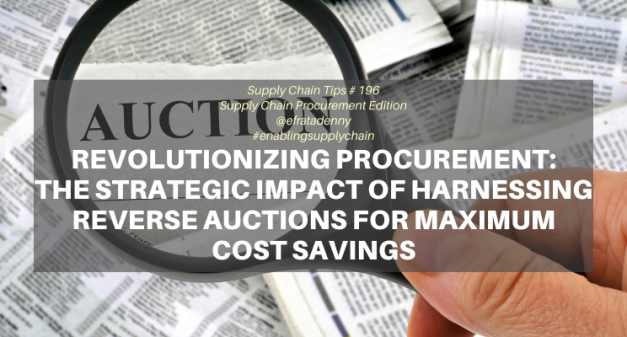
“Continuously evaluate and optimize your procurement strategy to align with changing business needs.” – Efrata Denny
In the dynamic realm of supply chain procurement, where change is the only constant, the key to sustained success lies in unwavering adaptability. The imperative to stay agile propels organizations to continuously evaluate and optimize their procurement strategy, ensuring it remains a dynamic force aligning with evolving business needs.
1. Business Alignment: Regular assessments of the procurement strategy serve as a compass, ensuring it navigates in tandem with the ever-shifting goals and priorities of the organization. This alignment is the cornerstone of a procurement strategy that drives business success.
2. Market Dynamics: A vigilant eye on market dynamics is crucial in a landscape where change is swift and relentless. Continuous evaluation allows organizations to anticipate and respond to evolving market trends, technologies, and consumer demands, positioning them at the forefront of innovation.
3. Cost Optimization: The quest for cost optimization is unending. Continuous evaluation of the procurement strategy unveils opportunities for negotiation, process streamlining, and the identification of cost-saving avenues. It’s a perpetual journey toward financial efficiency.
4. Supplier Performance: Ongoing evaluation provides a real-time gauge of supplier performance. Monitoring and assessing suppliers ensure they consistently meet quality, delivery, and service expectations, fostering a robust and reliable supply chain.
5. Risk Management: As the business environment morphs, so do the associated risks. Continuous evaluation is a proactive shield against unforeseen challenges, allowing organizations to identify and mitigate risks promptly, fortifying the resilience of the supply chain.
6. Innovation and Technology: A procurement strategy that stands still risks obsolescence. Continuous optimization facilitates the seamless integration of innovative technologies and digital solutions, enhancing efficiency, transparency, and collaboration in procurement processes.
7. Continuous Improvement: Embedded in the DNA of continuous evaluation is a culture of perpetual enhancement. It ensures that the procurement strategy evolves and adapts, unlocking opportunities for continuous improvement and elevated performance.
8. Stakeholder Engagement: Procurement doesn’t operate in isolation. Engaging with internal stakeholders through continuous evaluation ensures that the procurement strategy aligns with their evolving needs. This collaborative approach fosters buy-in and a shared vision for success.
In the journey toward procurement excellence, the true power lies in agility—embodied in the continuous evaluation and optimization of the procurement strategy. It’s not just a process; it’s a mindset that propels organizations forward, ensuring they not only survive but thrive amidst the ever-changing tides of the business landscape.



















